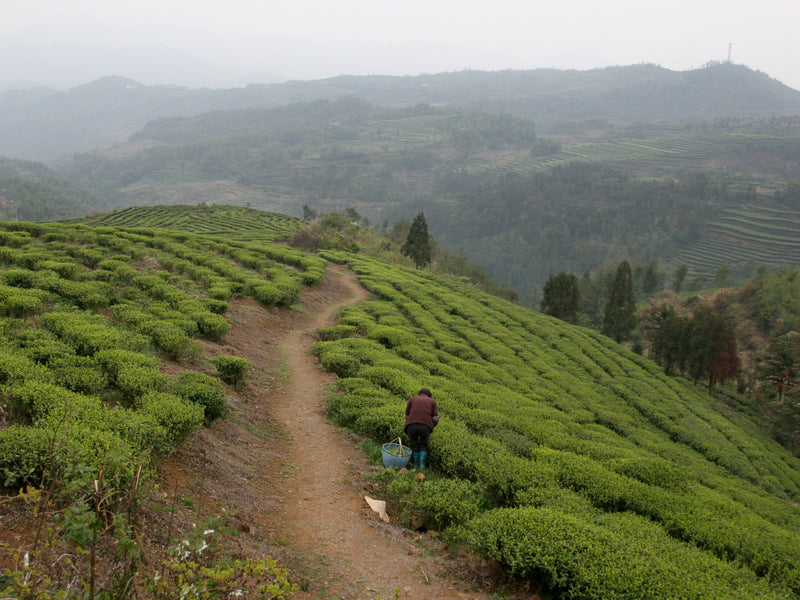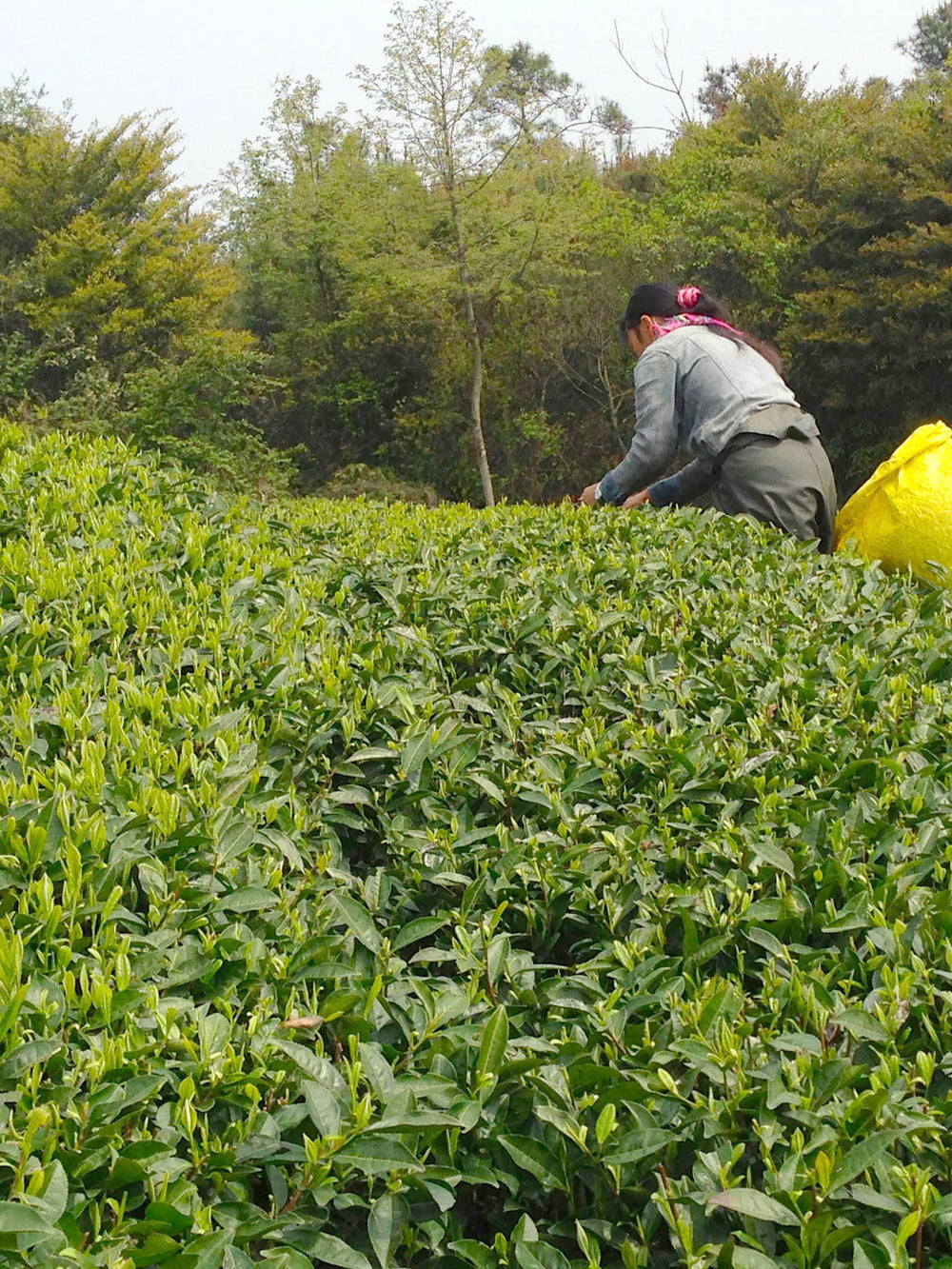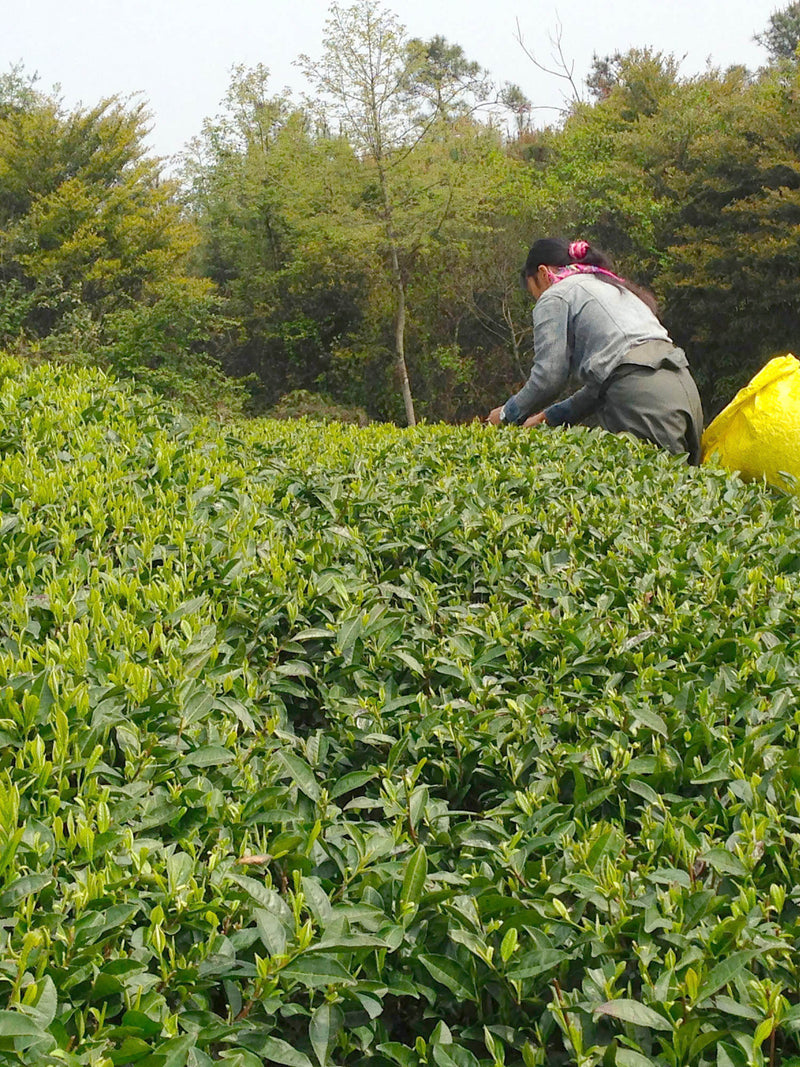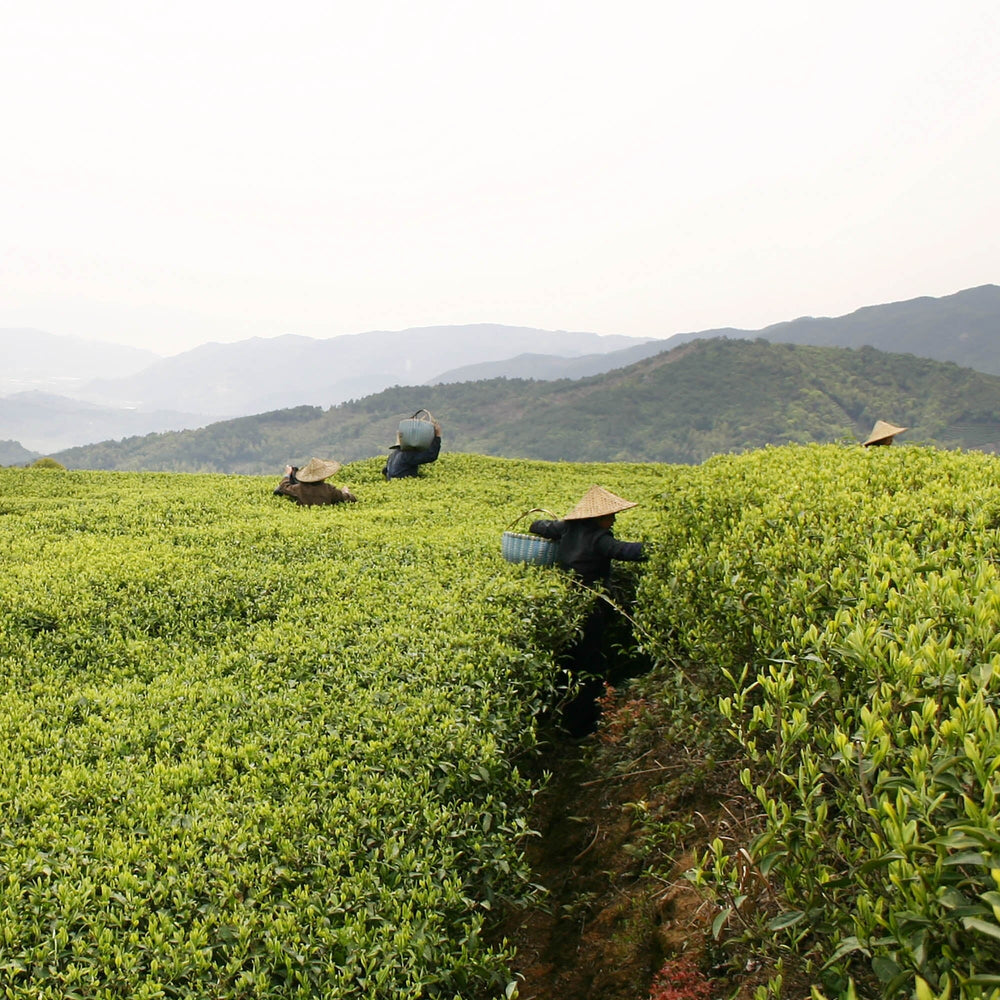Origins & Travel

Origins & Travel




We source many of Rishi’s reserve-quality 1st Flush white teas from this garden in Fuding, the traditional origin of white tea in China’s coastal Fujian province. White tea represents tea in perhaps its simplest, most noble form. Tender buds and sprouts are plucked in early spring, then simply withered and dried to preserve and celebrate their exquisite character and delicately sweet flavor. The best white teas are produced using select tea bush cultivars, such as the Fuding Da Hao cultivar seen here. White teas get their name from the downy, silvery-white tea leaf buds that are covered in “tricomes,” which are tiny hairs similar to those found on a peach skin. These bai hao (“white hairs”) imbue white teas with a sweet flavor and soft mouthfeel.


White teas are only picked on sunny days during the early spring harvest, which lasts from mid-March through April. Tea leaves plucked on rainy days are more muted in flavor than teas harvested under sunny skies. In ideal conditions, the weather will alternate with one or two days of early spring rains followed by several days of sun. This initiates photosynthesis and causes young tea leaves to sprout. The new growth is rich in amino acids and plant nutrients that were stored in the roots of the tea bush during its winter dormancy.
When harvesting fresh leaves for white tea, it is important that the tea leaves and tea buds are handled gently to preserve their delicate character. These tea farmers in Fuding are collecting their tender tea leaves in small baskets to ensure that the tea leaves do not crush under their own weight, which would hasten the oxidation process and harm their exquisite spring-harvest flavor.
The white tea gardens in Fuding are cultivated in carefully manicured rows of tea bushes, making it easy to harvest the bright green young tea leaves and buds. The hilly landscape and diverse ecology create many different zones within the tea garden, which flush at different times and are harvested plot-by-plot.


Fuding Da Bai ready to pluck
Fuding Da Bai (“Big White”) cultivar tea bushes, with their characteristic splayed bright green leaves, are ready to pluck in Fuding.


Fuding Da Bai
This close-up view shows the Fuding Da Bai cultivar tea bushes, which have thinner tea leaves and smaller tea buds than the Fuding Da Hao cultivar tea bushes.
As tea bushes mature, they grow more slowly than they did when they were young. Every 8-10 years, the tea bushes in this region must be “hard-pruned,” or cut back to about 10-12 inches in height to regenerate and create healthy, vigorous tea leaves. After being hard-pruned, the tea bushes must rest one year before they are large enough to harvest again. They reach their peak between years 3-8 after each hard-pruning. Every 3-5 years, the bushes undergo a medium-pruning, in which the medium size branches are trimmed back. Finally, every autumn the tea bushes undergo a light trimming, in which the rough sticks at the top of the bush are cut back to create a flat, even plucking “table” for the following spring. The altimeter here reads 1,200 feet above sea level, or about 400m in elevation.
Fuding Da Hao cultivar tea bushes, with their characteristic large, plump, skyward-pointing tea buds, spread out before a panoramic view of Long Hua temple and Fuding town below.


Fuding tea farmer Ms. Li harvesting tea leaves according to the one-leaf-and-one-bud plucking standard for White Peony white tea.


Ms. Hua demonstrating the proper technique for plucking spring tea: Grasp the tender stem, then pull up and across with a snapping motion. This ensures a clean break from the stem, which prevents the tea leaves will not oxidize too rapidly.
The Fuding Da Hao and Fuding Da Bai tea bush cultivars are the most famous cultivars of the tea plant for making white tea. Fuding Da Hao (“Fuding Big Hair”) is noted for its large, plump buds that point skyward, and is the ideal cultivar for making Silver Needle white tea. Fuding Da Bai (“Fuding Big White”) has a smaller bud than the Da Hao cultivar, with wider, more splayed tender leaves that have a bright green appearance. Fuding Da Bai is one of the most treasured cultivars for making White Peony white tea.


Notice the large, plump bud on this clipping from a Fuding Da Hao cultivar tea bush. Fuding Da Hao is the most treasured cultivar for Silver Needle white tea because its large buds are rich in amino acids and natural tea monosaccharides.
Tea gardens in nearby Bailin, another famous white tea growing region just one hour from Fuding.
Rishi Tea’s White Peony comes from mountainous tea gardens in Bailin, a coastal, high-elevation tea growing region in northeastern Fujian province. The combination of a montane climate, mineral rich soils (especially basalt), and the Fuding Da Bai cultivar lends our White Peony its unique charm and balance of sweet-umami flavor, smooth mouthfeel, and lush aromas of fresh hay with hints of fruit honey.
Solar-powered bug zappers and yellow sticky paper pheromone traps eliminate the need for any pesticides in our organic tea gardens in Bailin.
Buffer zones help maintain the purity of organic tea gardens by protecting against potential wind shift from conventional vegetable, fruit or tea gardens in the vicinity. Here, a raspberry bush grows along the edge of our tea gardens in Fuding.
The high elevation tea gardens at Fuding spread out before Bailin town below.



